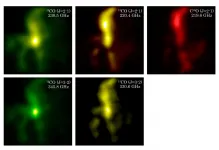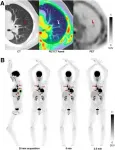The treatments, or intervention methods, delivered by specialized staff to the very young, during the study were either the Early Intensive Behavioral Intervention (EIBI) or Early Start Denver Model (ESDM). The researchers found negligible overall effects on receptive or expressive language development, nonverbal abilities, or autism symptom severity after one year of direct intervention, which also included twice-monthly parental coaching.
"Our results should reassure parents who do not have access to the exact treatment type or the number of treatment hours that they would ideally like their recently diagnosed toddlers to receive," said Sally Rogers, PhD, lead author of the study and Professor Emeritus at the UC Davis Department of Psychiatry and Behavioral Sciences, and the MIND Institute. "Given the lack of differences across these four groups, it may well be that it's the common elements rather than the differences that are resulting in children's similar progress."
Eighty-seven toddlers with ASD, aged between 12-30 months, were enrolled and randomized into one of four groups: Early Intensive behavioral intervention (EIBI) for 15 hours per week; EIBI for 25 hours per week; Early Start Denver Model (ESDM) for 15 hours per week; or ESDM for 25 hours per week. The children's overall developmental skills and autism severity were assessed at enrollment, and their expressive and receptive language skills, nonverbal abilities, and autism symptoms were examined three more times, at 6- and 12-months after enrollment (at which point intervention ended). Only three children dropped out of the study. The analyses included data from all enrolled children at all four time points regardless of the extent to which they participated in the study after enrollment - an intent-to-treat design - that adds additional rigor to the design and the findings.
Children also received intervention at home (or in other care settings) by a highly-trained team of paraprofessionals monitored and supervised by professional experts in the interventions and overseen by intervention developers. The researchers measured staff performance regularly to assure the quality of intervention. They also measured the extent to which the treatment delivery was modified over time in ways that varied from the core nature of the intervention.
"We found that all four groups of children made significant gains in language and nonverbal abilities, and significant improvements in autism symptom severity, over the two years of the study," Dr. Rogers added. "We also found that intervention style - EIBI or ESDM - had no significant effects on a child's progress in language, nonverbal abilities and autism severity over time. And, contrary to what we expected, a child's initial severity of developmental delay and autism symptoms did not differentially affect their progress in EIBI compared to ESDM in terms of language, nonverbal abilities, or improved autism symptoms over the year."
The findings are based on the multisite TADPOLE study, conducted from 2012-2019 by research teams at the MIND Institute, University of California Davis, Vanderbilt University, University of Washington, and supported by an independent data coordinating center at the University of California Los Angeles.
Why were the outcomes so similar? While there are widespread public (and professional) opinions about the number of intervention hours and the styles of intervention that are best for young children with ASD, there have been no studies conducted previously that tested the number of hours experimentally. Even though the two interventions seem so different, there are many commonalities that may explain their effects.
Several commonalities in the interventions:
They used tested, evidence-based, comprehensive interventions. Children's learning targets addressed both developmental and behavioral progress. Interventions were delivered consistently in terms of total hours and the model being followed. There was ongoing frequent review, supervision and training of the interventionists by well trained professional supervisors. Parents received ongoing coaching by the supervisors, allowing them to incorporate child learning into everyday activities at home and across multiple environments, materials, and adults. Attention was paid to the quality of the child's experience, including a focus on positive relationships with interventionists and their ability to engage in activities they enjoyed, either in learning activities (ESDM) and/or in breaks during their sessions (EIBI). "These commonalities, and the child's progress, may be why the parents in our study were so pleased with the intervention they received, regardless of the group to which they were assigned," said Dr. Rogers.
The researchers note that there is still much to learn about the core mechanisms which support child growth and change. "I firmly believe that ongoing, one-on-one caregiver coaching should be part of all early interventions for children with ASD, regardless of style or intensity. We have demonstrated effects on family support, self-efficacy, and family endorsement of the benefits of ongoing coaching as well as direct child intervention," said Rogers.
INFORMATION:
Notes for editors
The article is "A Multisite Randomized Controlled Trial Comparing the Effects of Intervention Intensity and Intervention Style on Outcomes for Young Children With Autism," by Sally J. Rogers, PhD, Paul Yoder, PhD, Annette Estes, PhD, Zachary Warren, PhD, John McEachin, PhD, Jeff Munson, PhD, Marie Rocha, PhD, Jessica Greenson, PhD, Lisa Wallace, MS, Elizabeth Gardner, PhD, Geraldine Dawson, PhD, Catherine A. Sugar, PhD, Gerhard Hellemann, PhD, Fiona Whelan, MS (https://doi.org/10.1016/j.jaac.2020.06.013). It currently appears on the JAACAP Articles In Press page and will appear in the Journal of the American Academy of Child and Adolescent Psychiatry, volume 60, issue 6 (June 2021), published by Elsevier.
Copies of this paper are available to credentialed journalists upon request; please contact the JAACAP Editorial Office at support@jaacap.org or +1 202 587 9674. Journalists wishing to interview the authors may contact Sally J. Rogers, PhD at sjrogers@ucdavis.edu.
About JAACAP
Journal of the American Academy of Child and Adolescent Psychiatry (JAACAP) is the official publication of the American Academy of Child and Adolescent Psychiatry. JAACAP is the leading journal focusing exclusively on today's psychiatric research and treatment of the child and adolescent. Published twelve times per year, each issue is committed to its mission of advancing the science of pediatric mental health and promoting the care of youth and their families.
The Journal's purpose is to advance research, clinical practice, and theory in child and adolescent psychiatry. It is interested in manuscripts from diverse viewpoints, including genetic, epidemiological, neurobiological, cognitive, behavioral, psychodynamic, social, cultural, and economic. Studies of diagnostic reliability and validity, psychotherapeutic and psychopharmacological treatment efficacy, and mental health services effectiveness are encouraged. The Journal also seeks to promote the well-being of children and families by publishing scholarly papers on such subjects as health policy, legislation, advocacy, culture and society, and service provision as they pertain to the mental health of children and families.
About Elsevier
As a global leader in information and analytics, Elsevier helps researchers and healthcare professionals advance science and improve health outcomes for the benefit of society. We do this by facilitating insights and critical decision-making for customers across the global research and health ecosystems.
In everything we publish, we uphold the highest standards of quality and integrity. We bring that same rigor to our information analytics solutions for researchers, health professionals, institutions and funders.
Elsevier employs 8,100 people worldwide. We have supported the work of our research and health partners for more than 140 years. Growing from our roots in publishing, we offer knowledge and valuable analytics that help our users make breakthroughs and drive societal progress. Digital solutions such as ScienceDirect, Scopus, SciVal, ClinicalKey and Sherpath support strategic research management, R&D performance, clinical decision support, and health education. Researchers and healthcare professionals rely on our 2,500+ digitized journals, including The Lancet and Cell, our 40,000 eBook titles; and our iconic reference works, such as Gray's Anatomy. With the Elsevier Foundation and our external Inclusion & Diversity Advisory Board, we work in partnership with diverse stakeholders to advance inclusion and diversity in science, research and healthcare in developing countries and around the world.
Elsevier is part of RELX, a global provider of information-based analytics and decision tools for professional and business customers. http://www.elsevier.com
Media contact
JAACAP Editorial Office
+1 202 587 9674
support@jaacap.org




